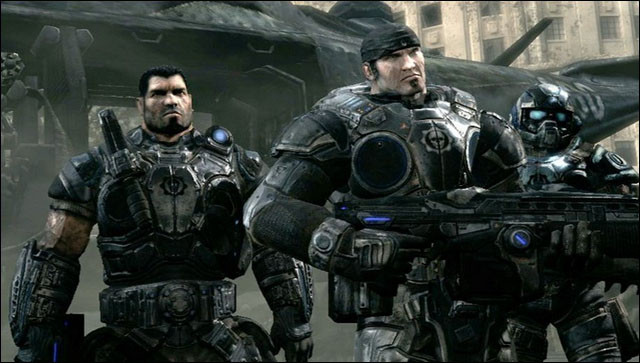news Australia’s interactive games industry is upbeat and prospects remain bright as consumption of games continues to thrive, according to a media release from Interactive Games and Entertainment Association (iGEA). The sentiments come despite latest data showing that there was a significant dip in ‘traditional retail’ computer and video games sales in 2011.
The latest data from independent market research group NPD Group Australia, which includes all revenue generated from console hardware, games software and gaming peripherals sold through retail, reveals a 12.8 per cent contraction to $1.5 billion from the corresponding 2010 period. However, iGEA CEO Ron Curry said this did not reveal the full picture as the rising popularity in digital games wasn’t reflected in the latest results. The NPD data excludes sales from online retail, downloadable content, online games subscriptions, in-game micro-transactions and mobile games.
“As Australians continue to access video games through a host of different channels, it’s becoming more challenging to aggregate sales data through a single source. Whilst the NPD data has revealed a dip in ‘traditional retail’ sales, which according to our latest Digital Australia report still represents the lion’s share of the games industry, other research has pointed to the growth in digital downloads, multi-player online games, in-game purchases and online subscriptions,” said Curry.
Local technology analyst firm Telsyte’s estimate that Australians will spend over $450 million in online gaming subscriptions and in-game purchase in 2012 corroborates Curry’s view, according to the iGEA. Telsyte Senior Research Manager Sam Yip said in the organisation’s statement: “Online gaming subscriptions and in-game virtual goods sales are growing strongly in Australia, and will account for around 20% of the overall digital goods and online subscriptions market (which consists of 26 categories such as Internet video, Internet music and digital news subscriptions) in 2012.”
The iGEA media release also cited other reports that highlight the growth of the interactive entertainment market in Australia. PricewaterhouseCoopers forecasted revenue for both traditional and digital sales to reach $2.5 billion in 2015, with online and mobile games predicted to generate close to 50 per cent of this revenue; while IDC anticipated demand for handheld gaming hardware and software would rise by roughly 20 per cent in 2012.
Curry said: “Overall, we’re seeing a lot of evidence point towards a continuing healthy interactive games industry. The incredible success of games such as Call of Duty 3: Modern Warfare 3 which became the fastest entertainment property to hit the $1 billion milestone globally, eclipsing the previous record set in 2009 by the film Avatar, is only one example of this.”
Anthony Reed, CEO of Games Development Association of Australia (GDAA) credited the success of local games developers as a driving force behind the interactive entertainment market.
“Global consumer confidence in the digital space is encouraging exceptional growth in the Australian game development industry,” he said in the iGEA’s statement. “In 2011, Australian-made games featured highly across multiple digital platforms. For example, Brisbane’s Halfbrick Studios recorded over 120 million downloads of their smash-hit, Fruit Ninja, and 11 million for the recently released, Jetpack Joyride, and Melbourne-based IronMonkey Studios won Apple’s coveted ‘Game of the Year’ award with DeadSpace. Into 2012 we will see many more innovative and creative properties made by Australian studios releasing to a global audience.”
Some key statistics from NPD Group Australia:
- The majority of games (54 per cent) sold were rated G and PG
- The top 20 software sales featured shooter games, role playing games, dancing games, timecards and sports games
- The most popular genre are shooter and action (both at 19 per cent) followed closely by family games (16 per cent)
However, it’s not all good news for Australia’s video gaming industry. As chronicled vividly in an ABC article on the subject in October last year, many in Australia’s industry fear the local development scene is on the brink of collapse, after a string of studios — including KMM Brisbane, Pandemic, Krome, THQ’s Melbourne and Brisbane studios, Visceral Games and Team Bondi — have shut their doors in recent years. Developers have blamed the issue on the high Australian dollar.
Image credit: Screenshot from Epic’s Gears of War game


GDAA and those companies still not closed of eeking out a living on mobile platforms will allways spin how the industry is going great. Reality. Since I worked as a developer for 20+ years and only recently left the industry, most of my friends are also games developers. Most are now in the US, Canada, Europe or Asia. Those that didn’t want to leave are working for mobile developers on salaries below what graduates get in other industries. Contract work, very little full time.
The Australian games industry is a shadow of it’s former self.
I know many who’ve been lured over to Montreal by Ubisoft… it’s so hard to compete with the huge tax breaks that the Canadian government gives to game developers. If we want to see a revival here we need the government to extend the Australian film tax rebate to games. Alternatively, we can just watch the talent (and revenue) go to overseas companies.
Yes, Canada is offering huge incentives. Most of the companies closing Australian studios immediately opened a new one in Canada. Another nail in the coffin was the Australian dollar. Going from around 60 cents in the dollar when Australian studios were thriving to todays parity is a huge hit. Companies effectively lost near 40% of their income. Add the GFC and game over.
Comments are closed.